Matthew Guidarelli is an adviser for entrepreneurs across industries; he supports their venture development throughout the startup lifecycle — helping founders build world-positive companies that combine profit & purpose.
He was previously part of the leadership team and participated in the evolution & expansion of the Harvard Innovation Labs. He tells us more about that, and about his new venture, Folly Ventures.
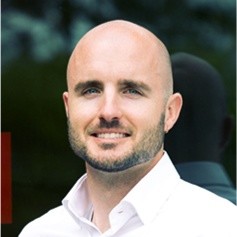
Hi Matthew, would you tell us what is the enterprise development program offered by the Harvard Innovation Labs? And illustrate with some figures like how many batches does it handle, what fields are covered, how many applications it receives etc…
Great to connect, Nicolas! I’ll start by providing some context on the Harvard Innovation Labs’ origination & mission, which might be helpful in your readers’ understanding for why we designed and evolved the organization the way we did since its inception. To this end, the Harvard Innovation Labs is a three-lab ecosystem designed to support Harvard students and select alumni in their quest to explore the worlds of innovation and entrepreneurship. Whether solving a problem by creating or growing a business, or simply learning about innovation more broadly, the Harvard Innovation Labs helps students and select alumni get there further, faster.
The Harvard i-lab, where it all began, was launched in 2011 with an explicit focus on current, degree-seeking Harvard students. It was Harvard’s experimental answer to long simmering questions of how the University might create a vibrant, One Harvard innovation ecosystem across all 12 schools, not just Harvard Business School, with the added aim of supporting entrepreneurs and innovators whilst they were still in school and thus eliminating the need for them to take a leave of absence in order to be positioned for success in building their company (i.e. think Zuckerberg, Gates, etc.).
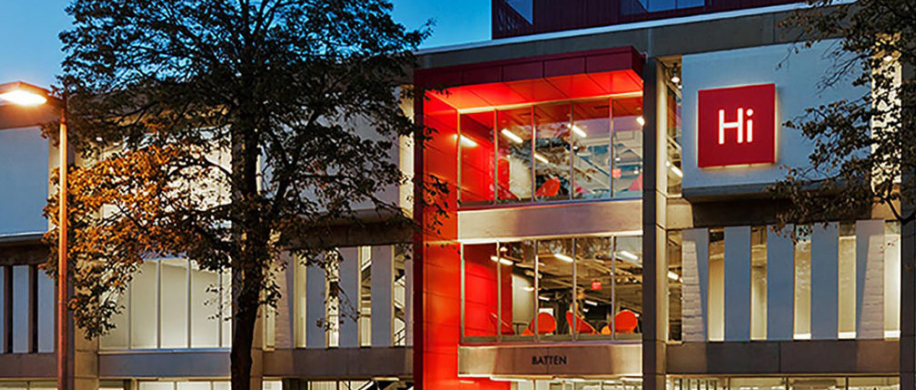
Being issue and stage agnostic, as well as equity and IP free, the Harvard i-lab supports an incredible range & depth of individuals: from students walking in the building not knowing what a value proposition is and just wanting to dip their toes in the water, to others who have already secured product-market fit and need help in building out and scaling their ventures. (This is one key difference from other innovation hubs which typically support a narrower field of work, are stage-specific, and are explicitly looking to pick only winners.) What you get from this charter is a beautiful melting pot of bright, motivated, and curious individuals with different backgrounds trying to solve problems across all industries — and for my colleagues and I, it delivered exciting challenges on a regular basis to meet the many diverse needs of the founders and ventures for where they were. Total reach of the i-lab averaged about 20% of the entire University population passing through our doors in a calendar year – whether to attend a workshop, meet with expert advisors, or work on their own venture. This is even more impressive when you learn the i-lab is at the southern-most end of campus (right next to HBS) and entirely co-curricular: meaning students are not paid to show up and they do not receive school credit for their time/activities at the i-lab. It is entirely self-driven, and the first test to knowing whether or not you have the startup and innovation gene – do you show up?
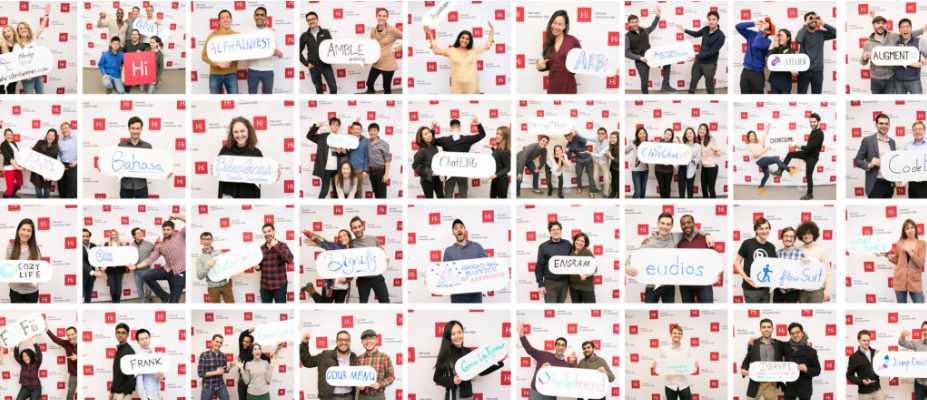
With that as background context, I’ll give a high-level view of the i-lab’s Venture Incubation Program (VIP) – one of the few resources offered that required an application & selection process. The VIP was designed for those Harvard founders (and their teams) that were beyond the concept phase, and who were motivated and required more dedicated support & resources to advance their ventures. Three times per year the leadership team would assemble a new cohort by reviewing existing teams’ progress along with reviewing 125-200+ new team applications in selecting the next cohort. Each class of the VIP had approximately 75-90 teams being supported – the majority being renewal teams, with an acceptance rate of 25-35% per cycle for new applications. Here’s a breakdown on some interesting, along with some vanity, metrics on the VIP (all details are dated as of August 2017 which is when I left and moved to Paris with my wife, and when a significant redesign of the VIP we had worked on was being released in the fall):
- Industry breakdown of ventures year over year:
- Health & Sciences – 28%
- Consumer Products/Services – 20%
- B2B/Enterprise or High Tech – 28%
- Social Enterprise – 24%
- 70% of Harvard founders were non-HBS
- All 12 schools were represented in application cycles with founder leads.
- 45-50% of founders in the VIP are female
- Side note: our ranking and review process was gender-blind – we were looking for the ventures who would both culturally fit in our program and be best positioned to take advantage of the resources we were providing. A strong supply-side no doubt enabled a natural balancing of the cohort.
- Over $600M raised by teams in VC funding
- A few notable i-lab ventures from the past few years:
- Vaxess Technologies
- RapidSOS
- ClimaCell
- Whoop
- ZoomCar
- LovePop
- Aldaltu Bioscience
- RightHand Robotics
- Shield AI
- Catalant
- Experfy
- GetAway
- ArtLifting
- TruMotion
- TomatoJos
- TetraScience
- Catalog Technologies
- Entrepreneurial Finance Lab: EFL
- Over 1000 early-stage ventures formally supported by the VIP since inception
- Countless failures (in startups and my team’s efforts as well), but the learnings have always been……priceless.
This is just a snapshot of the VIP’s impact – and much like many of your readers’ work, there are a lot of positive externalities from engaging your stakeholders in an entrepreneurial & innovative process where they experiment and extend beyond their comfort zones in a supportive environment. The trick is how to also harness that power for when ventures and innovations don’t work out (which is most often the case) that it still contributes measurable value to both the individual and the organization. For us, this was about culture and community – which has a longer life-span than even the most promising of enterprises.
Editors’ note: the new Launch Lab X now complements the VIP with a groundbreaking offering from Harvard Innovation Labs, exclusively for Harvard alumni-led ventures.
You share with us ‘the importance of being afraid of not being relevant’ when growing such an innovation lab: would you like to elaborate on this, and tell us about the secret formula to remain audacious, curious and bold?
Absolutely! My colleagues and I came to the Harvard Innovation Labs with a diverse range of founder and investing experience; we knew what it was like to build something from nothing and walk the sometimes lonely and always dynamic journey that entrepreneurs and innovators face. This gave us perspective and credibility when not only advising founders on critical issues of starting and building a company, but also in the design and intentionality of our approach towards building products and an ecosystem supporting people in addressing complex problems. But it did not give us all the answers, especially given the magnitude of demands and diversity of stakeholders being supported. Still, it could have been “easy” to rest on our laurels of our past experiences while also enjoying the strong brand power of Harvard and the organization’s initial success — but we didn’t. We were constantly asking ourselves “is this working?” “is there a better way?” “what are we missing?” “how could this go wrong?” “what do we not know?” “what are we not good at?” “what is our key value proposition and how do we scale it?”. All of this was self-driven by the team, not our Governing Board made up of the Deans and Provost of Harvard. And in the end it proved to be it’s own virtuous cycle where innovation from the staff wasn’t just from the creation of the additional labs, but of new in-house products, operation/system models, programs, etc.
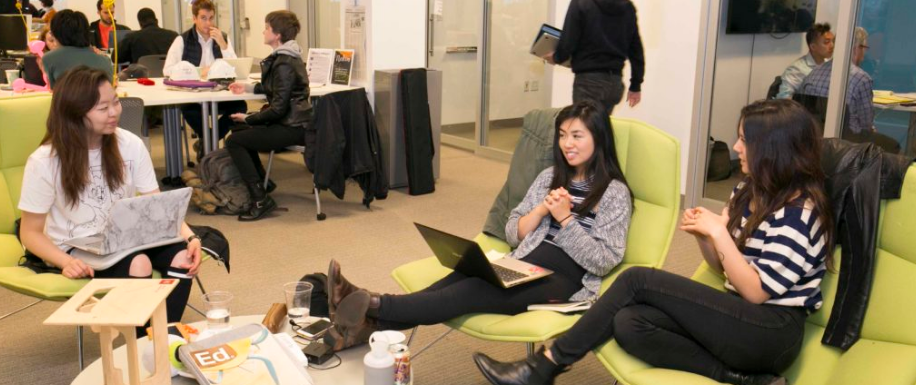
We live in a rapidly changing world. And if you’re in the startup and innovation space , change happens at an even faster rate. If you don’t adapt and evolve (both personally and as an organization), you will become irrelevant (see Blackberry as case study). Further, I believe we owe it to our stakeholders and to ourselves to remain continuously curious and self-aware in order to get ahead of the curve and thus continue to add value. People show up the first time because of yours or your company’s reputation – but they only stick around and continue to come back when you actually provide value/meaning.
Remaining relevant is like muscle building: slow, tiring, sometimes painful, and when you take an extended break from training, you’re sure to feel it the next time… In theory we nod our heads in agreement, but in practice it’s much harder. At times I felt overwhelmed by this myself too when I looked at all the balls in the air (and sometimes at the ones that had already hit the floor – sound familiar?). But it’s critical to the survival of the organization, and it can also be incredibly fun. What it comes down to though is the leadership team, and whether or not they have the courage to be vulnerable; to question their approach, knowledge, and impact; to establish a culture of experimentation and openness; and to bring the rigor and engender trust to embed the values of innovation & entrepreneurship throughout the entire entity (all levels of staff).
Here are some considerations when looking to create a thriving, collective, audacious and evolving team environment where all members of staff are positioned for relevance:
1. Hire and align for mission & curiosity.
You win or lose by your team; they’re your best asset. Period. So it goes without saying that your hiring & recruitment process needs to be strong and very intentional. Talent is definitely important for initial relevance, but getting individuals who have the right mind-set and are fired up by the problems you’re solving will outweigh all other factors. A shared mission that is constantly embedded in the company where individuals are naturally curious to pursue it will ensure a higher likelihood of self-driven efforts that push the entire organization forward.
2. Create a motivating construct.
A daily reminder of what you’re all working towards from a high-level can help people see the whole forest, not just the trees in front of them. At the Harvard Innovation Labs we called it our Journey to i – where “i” stood for innovation, and was symbolic of our ongoing commitment towards achieving it. Think of it like a nimble strategic plan, but where everyone on the team – not just leadership – had a role to play in executing it. This works especially well for motivating all levels of staff and creating a common language from which people are pushing themselves across the org chart. It also came in handy for decision-making when threatened by competing demands or status-quo, our Journey to i helped us prioritize where to focus our efforts (and also what to let go of…).
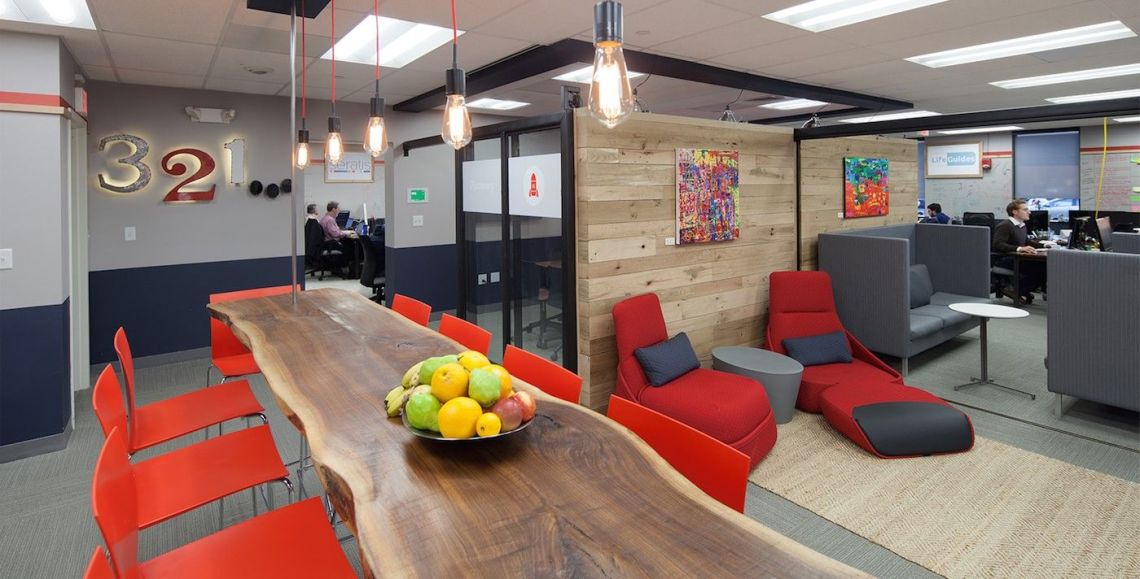
3. Become an experimentation machine (and reward it).
This is a very critical component to remaining nimble, innovative, and fostering an attractive culture. When I meet with clients, I hear and see all the time words on walls or executives saying “Be bold!” “Fail forward!” “Fail fast!” (you get the idea), but when I step away from the C-level folks and actually speak with the rest of the staff the words and messages ring hallow: they don’t feel empowered or safe to try new things, especially if it goes against the idea(s) of their bosses. Others also haven’t been given the tools to understand how to run experiments. And this is a huge opportunity missed!
Experimentation is much more about doing then thinking – there’s also less time for doubt and paralysis to step in when doing so, because experiments by their nature are about learning and testing assumptions – not about being correct. People are therefore more likely to explore more radical solutions to the problems or market opportunities you face, which have the best potential for evolving your organization for relevance in the long-term.
Final take away for leadership: the best ideas don’t always come from the top; and practice radical transparency to your entire team about what you don’t know, eagerly share the moments you were wrong, and encourage the same level of openness and celebration across the entire organization.
4. Keep your customer(s) front and center.
How can you know what is/will be needed if you’re not steeped in the intimacy of your customers’ problems and experiences? Fortunately for us, our customers were the founders that we worked with on a regular basis. And that population was large and rapidly changing. Given the breadth of issues they faced, we were constantly having to learn and evolve to not just meet their needs, but get ahead of them. A lot of entities start to coast with their products/services once a certain level of traction has been made and put themselves on auto-pilot. For your own organizations, think and go beyond your understanding of what currently exists and put yourself in the stakeholders’ shoes.
Also, knowing what happens to and how individuals fail when their innovations/ventures fail is also important to your learning process.
5. Don’t be in love with your idea(s) or your past success.
Don’t get me wrong, celebrating both small and big wins is important – but that’s different from uttering or thinking you’re good to go because of your previous history. It’s not just about measuring and evaluating your work (though that’s important too), it’s about always asking questions and challenging the status-quo. And that includes status-quo that you created…
i.e. The VIP program was objectively successful by several measures, but after every cohort we were adapting our approach to be not just better, but adaptive to the changing ecosystem around us too. That also meant letting go of certain programs and ways of doing things that, overall, had nothing identifiably wrong, we just saw a new path that would leap us ahead. Letting go is hard, but necessary.

What kind of model for entrepreneur acceleration did you set-up?
Our method towards supporting entrepreneurs is adaptive, milestone-based, and most importantly, not one-size-fits all. We created a dynamic incubator ecosystem that unleashes the innovative power of individuals through a network of highly-curated advisors and mentors, peer collaboration and interaction, and comprehensive resource and programming support. We worked hard to curate the right type of people who espouse our mission & values, and build resources to help us better help our companies advance forward.
Our model summation was essentially that while we believed knowledge is the engine of innovation, connection and collaboration are the fuel. The design of the programs and products we created always took on these core values – it was this consistency of intention that has led to positive outcomes.
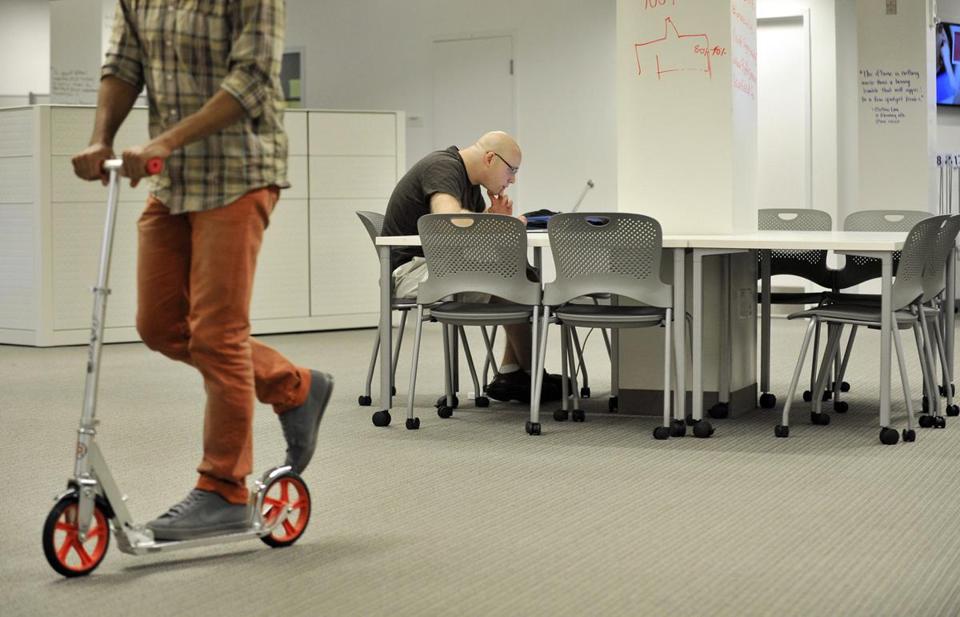
What are the growth steps you were specifically at the initiative of? Adding the alumni-focused Harvard Launch Lab in 2014 to the i-Lab created in 2011?
The blank canvas for growth and evolution was a big reason for why I joined the leadership team in 2014 when it was still just the i-lab and programs & product offerings were still very nascent. Around this time we were getting enough ventures with real traction from the VIP, but then they would graduate – and outside of our personal relationships with the founders, we did not have a formal Harvard resource to ensure growth stage companies received the support they needed during this critical time after they graduated. We started talking to our founders and wanting to figure out what their needs and critical challenges were as growth stage companies and how that played out with our brand and positioning.
So in the fall of 2014 we selected 12 companies from our VIP who had recently graduated and prototyped a new space of 1000 square meters (hope you appreciate my metric conversion here…) with the insights gleaned from our research, and proceeded to learn and adapt our offering throughout the year. We took those learnings and then grew the Launch Lab by 3X in the fall of 2015: 36 curated companies and 3000 square meters.
The key model attributes to the Launch Lab were as follows:
- Eligibility required a Harvard alumni founder on the team.
- Selection process accounted for potential of the venture as well as culture/community fit (not too dissimilar from the i-lab).
- Once admitted, teams would pay a below-market rate rent based on the size of their company and on a month-to-month basis (thus de-risking the need to take on a lease during this rapid period of hiring and uncertainty).
- Founders were assigned an advisor (a member of the leadership team) who would support their company development during their tenure.
- Founders also had an expectation to support programming and engagement with VIP teams at the i-lab.
Key to our success across all three labs was the emphasis on curation (of both value-creators and value-receivers), community, and connection. Without these elements, we would have been simply a WeWork with a “Hi” logo (something my colleagues and I dreaded and believed if it ever got to that point we were no longer relevant, just space with smart people). Instead, the creation of a vibrant, intentional ecosystem extended the reach of staff and created a virtuous cycle which over 95% of founders that passed through our ecosystem rating as the most important variable to their time with the Harvard Innovation Labs and the unlocking of unrealized value in their startup lifecycle.
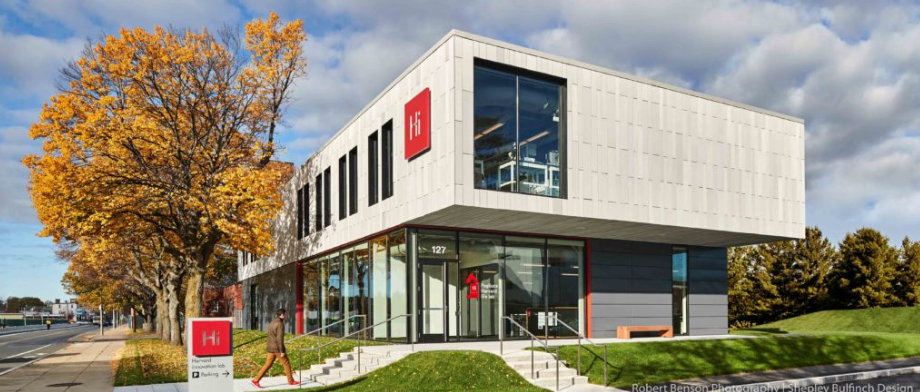
Can you tell us more about the vertical on Life-Science ventures, the Pagliuca Harvard Life Lab, a co-working life-sciences community, created in 2016?
Boston has an incredible biotech, health, and life science ecosystem. Traditionally, health and science ventures have one of the longest venture cycles to go through, as well as high barriers to entry due to cost. We also noticed that many of our companies in this vertical had their teams split between the i-lab and the labs in which they worked in which were far away. This challenge then lead to the creation of the Pagliuca Harvard Life Lab – a wet lab and co-working space launched in the fall of 2016 to better address the barriers to entry and bring the talent closer to where the rest of the resources were for launching Harvard companies.
The space itself is quite novel in that we wanted to build a prototype to test our assumptions, but how do you do that with a facility that would hold a lot of expensive equipment and need to meet strict government safety guidelines? Thankfully our Managing Director found a company that builds modular buildings which enabled the Life Lab to go from approval in February 2016 by the Harvard Corporation to a ribbon-cutting ceremony that fall semester. The speed and turnaround of the project was a success not just from a lot of hard work and long nights by so many people, but from the generosity of Judy and Stephen Pagliuca and the alignment on the vision from our Governing Board and key stakeholders across the entire University. The greater ecosystem can’t ever be forgotten when operating an innovation lab derived from a parent company (no matter how frustrating at times that can be…).
Potential Life Lab teams go through a rigorous process where both the venture and the science behind what they’re working on is evaluated for its potential for a transformative impact. Similar to the Launch Lab in month-to-month payments, assignment of a staff advisor, and integration into the greater Harvard Innovation Labs ecosystem, we didn’t want to just become a fancy co-working space with lab coats and expensive equipment; we wanted our organizational DNA and culture to be integrated from the start. So for our inaugural cohort over half the ventures accepted were former VIP teams – founders who had gone through our process before, who we had relationships with, and who bought into the values and behavior expectations of the community – and they were given first access to the space in order to set the norms and help onboard the rest of their cohort (who had never participated at the i-lab before) so a virtuous cycle would continue on. The aim for this building will be to run for the next several years and the Board and leadership team at that point will decide whether to make a bigger investment in a larger, more permanent space.

{An aside to the readers: I think we are quite privileged to be doing the work we’re doing – don’t you think? One of the coolest aspects about our profession is we get to work with brilliant people doing incredibly interesting things. I would often go home exhausted from not just the objectives of the day, but the new knowledge and technologies I would be exposed to: from an extraction of a protein from silk that stabilized vaccines and eliminated the need for a cold-chain, to a company storing data and information on DNA, to name it. Waking up excited to get to work, to solve problems that matter, and to help support those with the courage to dream big and transform organizations and the world for the better is really very special. I hope you too are experiencing this in your current roles.}
What is the mission of your new agency, Folly Ventures, and what the next rendez-vous to discover what you do?
It’s been a fascinating and incredible journey this past year, Nicolas. I came to Paris with my wife one year ago this month so she can be closer to her family following the unexpected loss of her dad. This move was personal, not career related, so I had no expectations of what my next endeavor would entail. But as I found myself diving in to understanding this new community and ecosystem, speaking with entrepreneurs, corporate executives and investors, it became clear it is both an exciting time in France (and across Europe), and one I think is ripe for an evolution in ways people aren’t always talking about.
This is where Folly Ventures came to be. We’re an innovation company with the mission of helping organizations evolve, grow, and bring new ideas to market. We partner with purpose-driven entrepreneurs, corporate leaders, and public change-agents who challenge the status-quo, who seek to understand problems deeply, and who desire meaningful change. In short, we work with the risk takers.
Our commercial impact comes from unleashing the human potential of your organization. At Folly, we believe your team is your greatest asset, and our approach marks the difference between a commoditized intervention and an investment that lasts.
The public-facing pieces of Folly Ventures are coming together now (so stay tuned), but it’s been great implementing our model whilst working with clients over the past few months in the US and France (including BNP and a rapidly-growing beverage company). I’m always open to connecting with good people doing interesting things. If any of your readers would like to grab a coffee and share more about their work, vision, and challenges, please feel free to reach out directly to say hello: matthew@follyventures.com.

